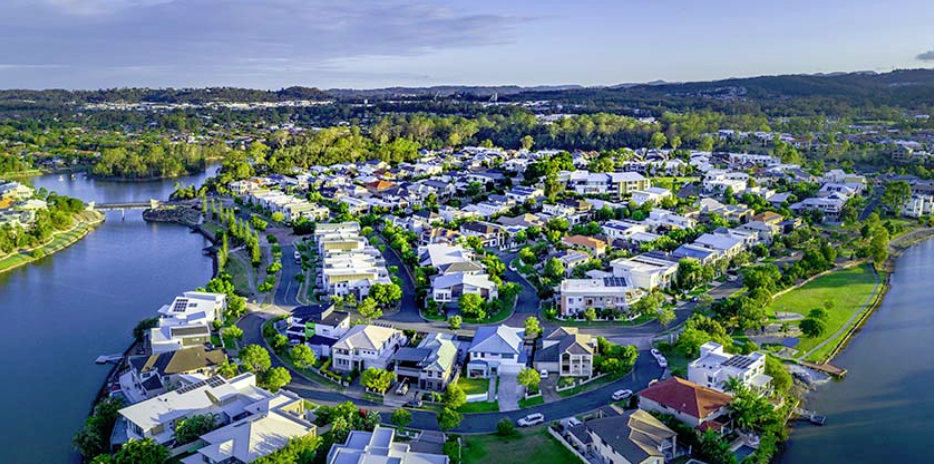According to CoreLogic’s Hedonic Home Value Index, national dwelling values fell by 0.1 per cent in September, the smallest decline since values started reducing in May this year.
The decline included a 0.2 per cent drop in the combined capitals index and a 0.4 per cent rise in the combined regionals index.
CoreLogic head of research Tim Lawless said Melbourne led the decline, dragging down the headline results with it.
“By far the weakest result across capital cities, Melbourne housing values were down 0.9 per cent in September,” he said.
“Since peaking in March, Melbourne values are down 5.5 per cent. With restrictions starting to lift and private home inspections once again permitted, we expect to see activity lift in October.”
Sydney’s rate of decline has been consistently easing since July, reducing by 0.3 per cent in September.
Sydney and Melbourne comprise about 40 per cent of Australian’s housing stock by number and 55 per cent by value.
On the other hand, all the other capital cities posted growth, with Darwin posting a 1.6 per cent growth, while Adelaide grew 0.8 per cent, Brisbane by 0.5 per cent, Hobart and Canberra by 0.4 per cent, and Perth by 0.2 per cent.
According to Mr Lawless, low advertised stock levels have been a key driver in supporting housing values, as new listing numbers nationally have remained 22 per cent lower than a year ago, and 25 per cent below the five-year average.
Similarly, total advertised stock levels were 14 per cent below last year’s level and 17 per cent below the five-year average.
Mr Lawless said the tight levels of stock when demand is recovering is creating an urgency in the market.
“While the number of advertised homes is 14 per cent lower than a year ago, our estimate of home sales through the September quarter was 2.8 per cent higher than the same time last year,” he said.
“The imbalance between available supply and housing demand is one of the reasons why housing values have hardly fallen through the COVID period so far, and helps to explain the recent upwards trend in values across some cities.”
Estimates of sales activity have recently trended lower since rebounding between May and July, which was largely attributed to restrictions across the Victorian market during the second wave of the coronavirus, but also weak sentiment in other regions, low advertised supply levels and seasonal factors.
Looking forward, Mr Lawless predicted a mixture of headwinds and tailwinds.
Headwinds would manifest as fiscal support is wound back and distressed borrowers see the full extent of their repayment commitments.
“It is logical to assume there will be a rise in urgent or distressed listings over the coming months; however, so far we have seen new listings rapidly absorbed by the market,” Mr Lawless said.
So far, Mr Lawless said he has not seen signs of a rise in distressed listings or stock accumulating in the market.
“In fact, the opposite seems to be true, where new listings are being absorbed by the market faster than the rate at which they are being added,” he said.
“This trend will be important to monitor over coming months as fiscal support tapers and the financial situation of borrowers taking a repayment holiday is assessed by their lender A rise in urgent or distressed listings would provide a further test for the resilience of housing values.”
Other downside risks could include expectations of persistently weak labour market conditions, low rates of overseas migration and minimal wage growth.
However, Mr Lawless expects that a new round of government spending initiatives and stimulus measures to be announced in the 2020 federal budget to be handed next week could support jobs growth and consumption, and spur business investment and productivity.
Additionally, the proposed changes to responsible lending laws could streamline credit flows and increase availability by early March 2020, he added.
“Credit availability has historically shown a close relationship with activity in the housing sector,” he said.
Economist revises down projections
Commenting on house prices going forward following the release of the CoreLogic data, AMP Capital chief economist Shane Oliver said he has revised down his top-to-bottom forecast for property price falls from a 10-15 per cent decline to a 5-10 per cent decline.
“With prices having already fallen by around 3 per cent, this leaves only another 5 per cent or so to go,” he said.
“National capital city average prices are likely to be rising again by around mid-next year as the positives of record-low interest rates and government support measures for the property market start to dominate.
“The hit to immigration which with high unemployment will take many years to reverse will act as a constraint on rising house prices though, relative to the last 15 years when very strong immigration meant that underlying housing demand far exceeded supply.”
[Related: Buyer demand drives up Perth house prices]
 ;
;
